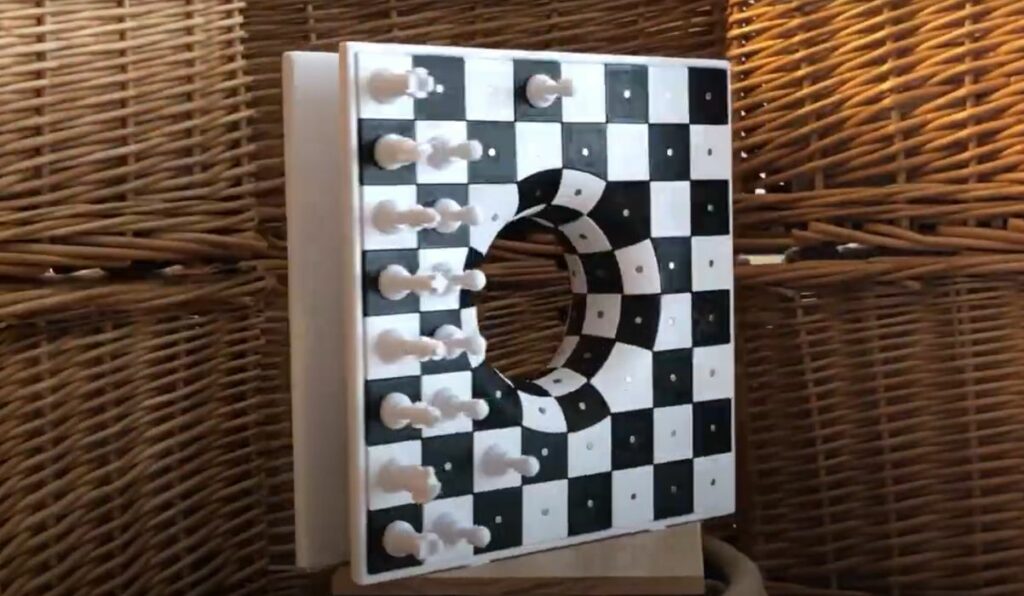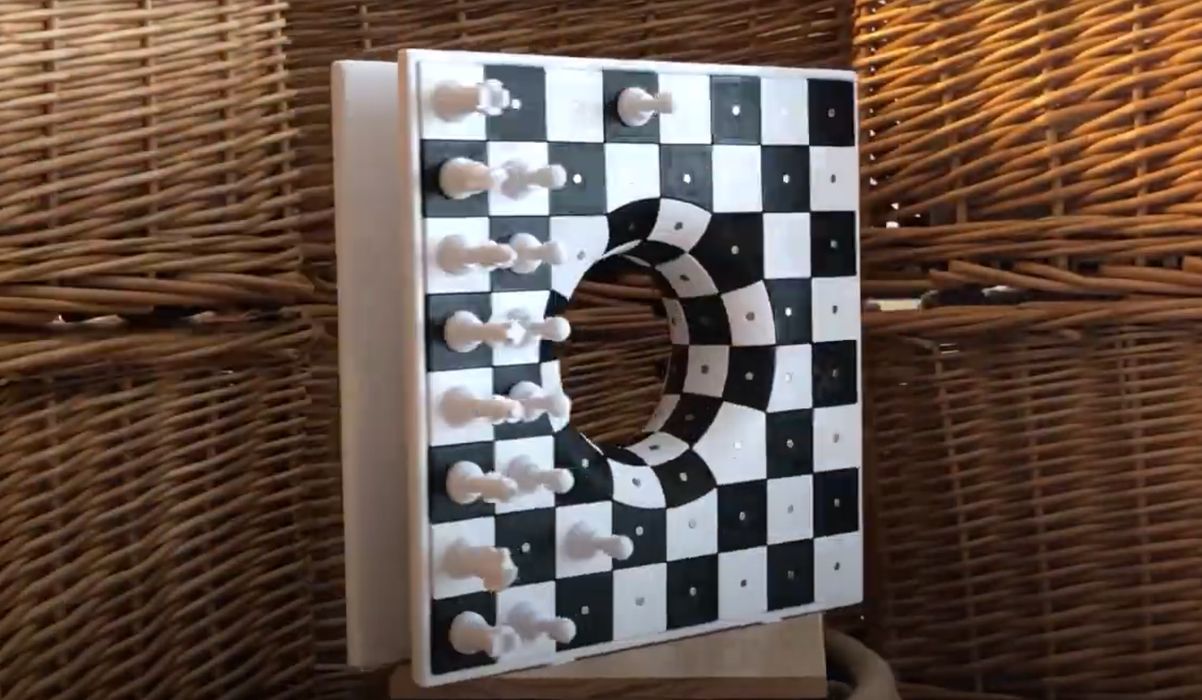
This week’s selection is the Wormhole Chess Board by Canadian DIY designer DaveMakesStuff.
This is perhaps the oddest chess board you’ve ever seen, exceeding even the famous tri-dimensional chess board from the original Star Trek. Here we have two standard chess boards, joined by what appears to be a wormhole between them.
Traveling by wormhole always requires unusual effort, and that’s true here: the two chess boards are mounted vertically to enable a complete view of both boards by two players.
The vertical arrangement also required the chess pieces to be attached, otherwise they’d no doubt fall off into the abyss. Fortunately, the chess pieces are also included with the design, in both full and small sized formats.
How exactly does one play chess on this thing? Watch the accompanying video:
A rotating platform seems to be a useful accessory for this design.
The 3D models for this piece are available for download for free at Thangs, and the board itself is composed of only a few parts, some of which must be printed several times.
The design includes base elements of the board half, along with the “wormhole half” that each are printed twice and attached.
On top of the base elements you must print and mount the squares. DaveMakesStuff has conveniently provided a 3D model of a “quadrant of squares”, which includes standard flat squares and a selection of curvy squares that fit into the wormhole portion.
You’ll need to print four of these quadrant models, but that makes it possible to 3D print two in black and two in white. By mixing up these square prints, you’ll be able to easily construct the classic black and white pattern on the board.
How are the chess pieces attached? It’s magnetic – you will require 208 1/8” magnets to place in small holes in the squares, as well as the bottom of each chess pieces. The magnets will securely hold the piece on each square.
While printing and assembling this item is relatively straightforward, playing chess on this board is quite another matter. DaveMakesStuff explains:
“Actual game play on this board is beyond challenging so unless you’re a genius, this board is more of an art or conversation piece.”
What makes it so complex? For starters there are actually four places where pieces can be lined up, meaning you could have four players at once. Or two players with more pieces, or one with three times the pieces of the other.
DaveMakesStuff explains more challenges:
“Part of what makes game play so challenging is the presence of the eight pentagons that are required to transition between the flat and curved surfaces.
Here are a few suggestions if you want to try playing.
Moving a piece through a pentagon allows for additional movement options. When entering from a column or row on the flat surface (such as with a rook) there are two exit options, one that allows the piece to remain on the flat surface and another that allows the piece to enter the wormhole. The reverse is true when entering a pentagon from the wormhole. When entering a pentagon from a diagonal (such as with a bishop) there are two options for exiting the pentagon, both of which allow the piece to remain on its own colour.”
I think you now understand how complex this could be.
If you’re a chess buff and up for an interesting making challenge, this is the 3D model for you.
Via Thangs

